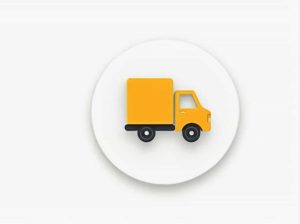In business proprietors sometimes withdraw goods for personal use which affects financial records taxation and inventory management. When Thomas a sole proprietor withdrew goods from his business it impacted the company’s financial statements and required proper accounting treatment.
Understanding how to record such transactions is essential for accurate bookkeeping tax compliance and business evaluation. This topic explores the implications of withdrawing business goods accounting treatment and tax considerations.
1. What Does It Mean When a Proprietor Withdraws Goods?
A proprietor withdrawing goods from the business means taking inventory or assets for personal use without selling them. This is common in sole proprietorships where the owner and the business are legally considered the same entity.
A. Why Would a Proprietor Withdraw Goods?
There are several reasons why a business owner might withdraw goods such as:
- Personal consumption (e.g. a grocery store owner taking food items).
- Gift or donation to family friends or charities.
- Use for another business or personal project.
B. Impact on Business Operations
Withdrawing goods affects different areas of business including:
- Reduced inventory which may impact stock levels and availability for customers.
- Changes in financial records requiring proper adjustments in accounting books.
- Tax implications as some withdrawals may be considered personal income.
2. Accounting Treatment for Withdrawn Goods
Proper accounting records must be maintained when a proprietor takes goods for personal use. This ensures transparency in financial statements and helps avoid tax issues.
A. Recording the Withdrawal in Books of Accounts
When goods are withdrawn:
- Inventory decreases as the goods are no longer available for sale.
- Owner’s capital account is adjusted since the withdrawal is considered a personal transaction.
Journal Entry for Withdrawn Goods:
If Thomas withdrew goods worth $500 the journal entry would be:
Drawings Account $500
Inventory Account $500
This reflects that goods were taken for personal use reducing both inventory and the proprietor’s capital.
B. Effect on Financial Statements
- Balance Sheet: The assets (inventory) decrease and the owner’s capital reduces.
- Income Statement: No direct effect on profit and loss since it is not a sale.
3. Tax Implications of Withdrawing Goods from Business
In many countries withdrawing goods for personal use may have tax consequences especially for value-added tax (VAT) or goods and services tax (GST).
A. VAT/GST Considerations
If Thomas’s business is VAT-registered he may need to account for VAT when withdrawing goods. In this case:
- The withdrawal is considered a self-supply for tax purposes.
- VAT is calculated based on the market value of the goods.
Example: If the VAT rate is 10% and goods worth $500 are withdrawn VAT payable would be $50.
B. Income Tax Considerations
Withdrawals may affect taxable income:
- If recorded as a drawing it does not affect the business’s net income.
- If treated as salary or distribution it may be subject to income tax.
4. How to Manage Withdrawals Effectively
To avoid financial and tax issues proprietors should follow best practices when withdrawing goods.
A. Maintain Accurate Records
- Keep a withdrawal log detailing the date item quantity and value.
- Ensure proper accounting entries are made.
B. Separate Business and Personal Use
- Avoid frequent withdrawals that may impact stock levels.
- Consider paying for personal use rather than taking goods directly.
C. Consult an Accountant
- Seek professional advice to ensure tax compliance.
- Understand how withdrawals impact profitability and financial health.
When Thomas a proprietor withdrew goods from his business it affected his inventory financial records and taxes. Proper accounting ensures compliance and maintaining clear records helps avoid future complications.
Business owners should be aware of the impact of withdrawals and manage them wisely to maintain financial stability.



